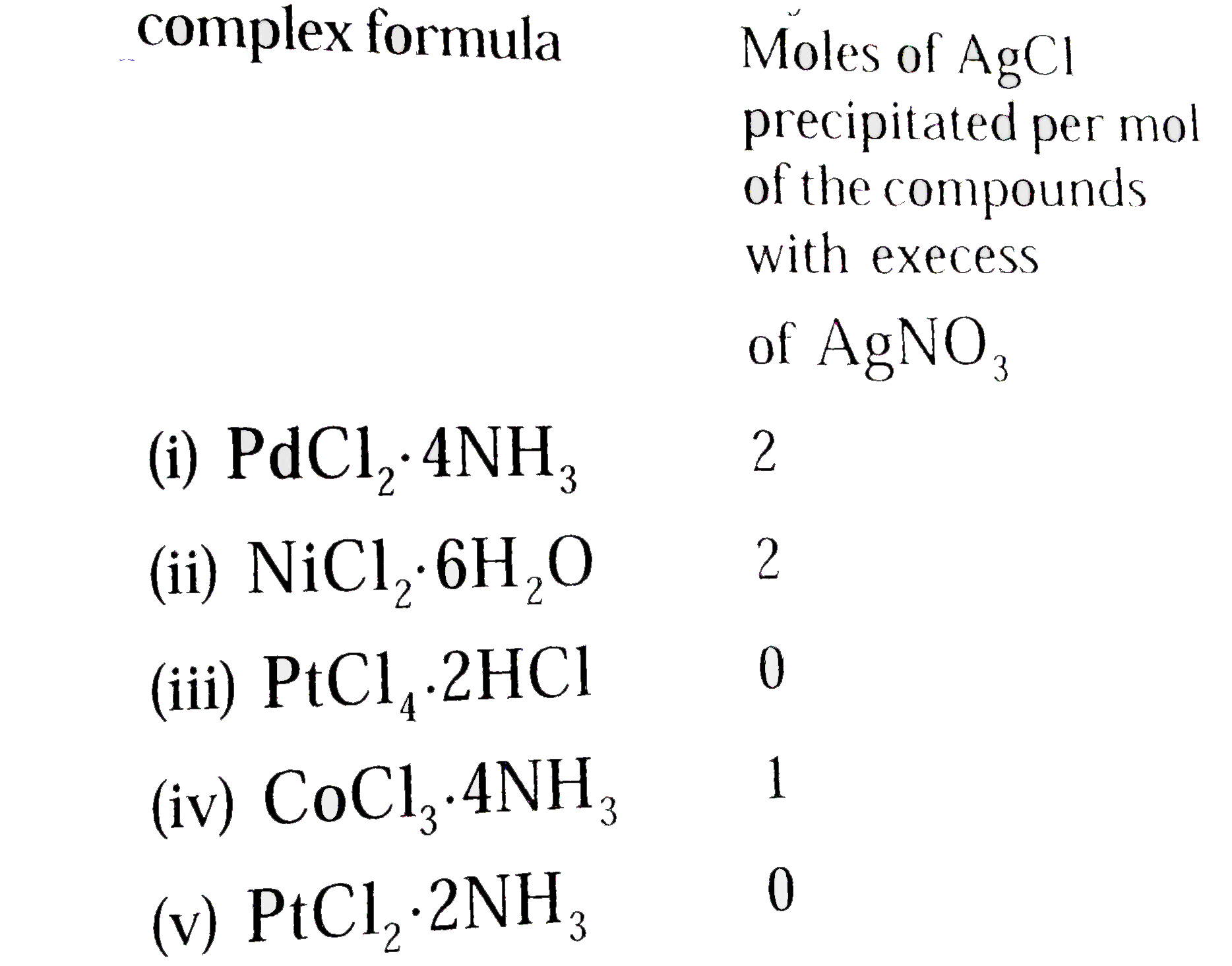In the formation of complex entity, the central metal atom/ion acts as :
Lewis base
Bronsted base
Lewis acid
Bronsted acid
The correct Answer is:C
It is a Lewis acid as it accepts pait of electrons from the ligands thereby forming coordinate bond
Topper's Solved these Questions
- CO-ORDINATION COMPOUNDS BOOK - DINESH PUBLICATIONCHAPTER - CO-ORDINATION COMPOUNDS EXERCISE - REVISION QUESTIONS
165 Videos
- CO-ORDINATION COMPOUNDS BOOK - DINESH PUBLICATIONCHAPTER - CO-ORDINATION COMPOUNDS EXERCISE - SELECTED STRAIGHT OBJECTIVE TYPE MCQS
84 Videos
- CHEMISTRY IN EVERY DAY LIFEBOOK - DINESH PUBLICATIONCHAPTER - CHEMISTRY IN EVERY DAY LIFEEXERCISE - Unit test-9
50 Videos
- CYANIDES, ISOCYANIDES, NITROCOMPOUNDS AND AMINESBOOK - DINESH PUBLICATIONCHAPTER - CYANIDES, ISOCYANIDES, NITROCOMPOUNDS AND AMINESEXERCISE - Unit test - 8
20 Videos
Similar Questions
Define central metal atom/ion.
View SolutionWhich of the following statements is correct with regard to complex ion ? .
(a) complex ion consists of a central ion bonded to two or more donor ions or molecules usually does not dissociate into simple ions or molecules even in a solution and exhibits properties different from its constituent ions or molecules
(b) The donor ions and molecues which coordinate with the central atom or ion a complex are called ligands
The sum of the number of electrons pressent in the central metal ion or atom and those donated by the ligands is called the effective atomic number of the central metal aton and this number is usually the same as the atomic number of the next higher noble gas
(d) All of these .
View Solution
Knowledge Check
In complex compounds the central metal atom can act as
AA Lewis acidBA Lewis baseCA Bronsted acidDA Arrhenius acidIn which of the following complex ion, the central metal ions is in a state of sp3d2 hybridization ?
A[CoF6]3−B[Co(NH3)6]3+C[Fe(CN)6]3−D[Cr(NH3)6]3+In which of the following pairs of complexes the central metal/ions do have same effective atomic number?
A[Cr(CO)6] and [Fe(CO)5]B[Co(NH3)6]2+ and [Ni(NH3)6]2+C[Cu(CN4)]3− and [Ni(CO)4]D[V(CO)6]− and [Co(NO2)6]3−
The transtion metals form complexes that involve central metal atom coordinated with ligands. The geometry of these complexes depends upon the number of ligands associated with the central metal atom. Hexacoordinate metal complexes normally perfer to have octahedral geometry.
From the following pair of oxides, indicate the number of d electrons of central metal atom. Also indicate which oxide will be coloriess and which will be colored. Explain your answer in brief.
View SolutionOn the basis of the following observations made with acqueous solutions. In which of the following complexes the central metal atom exhibits secondary valency is six

View SolutionIn Which of the following pair fo complexes the central metal/ions do have same effective atomic number ?
View SolutionWhich of the following pair of complexes have the same EAN of the central metal atoms/ions?
View SolutionThe complex which has no d-electron in the central metal atom is .
View Solution
